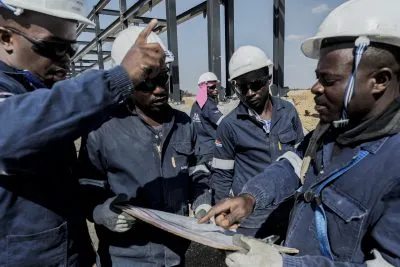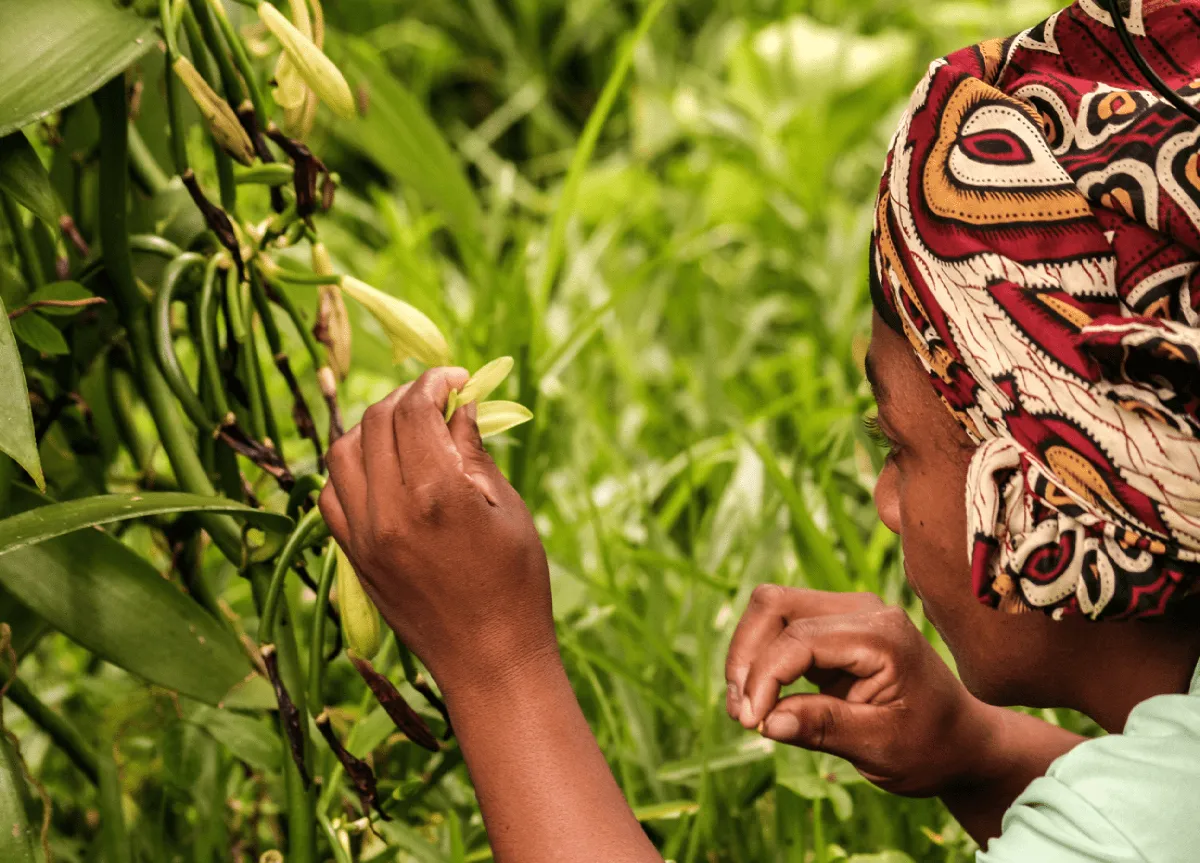Like the rest of the world, the UAE was negatively impacted by the global economic crisis between 2008 and 2009, especially the emirate of Dubai which was highly leveraged.
The UAE, and Dubai in particular went through a boom-and-bust cycle that caused a severe property crisis and resulted in dozens of projects being put on hold. But, while the economic woes continue in Europe and the US, both Africa and the UAE have shown rapid recovery and are posting high growth rates.
After contracting by 4.8% in 2009, the UAE’s real GDP has managed to bounce back. In 2011, GDP grew by 1.3%; and in 2012 it rose again by 4.2%. Further growth is expected this year. “All indications show that the UAE and Dubai economy will continue growing in 2013 by 3.8%,” Sheikh Ahmed bin Saeed Al Maktoum, chairman and CEO of Emirates Group, chairman of Emirates NBD, and chairman of Dubai World, told weekly magazine Arabian Business.
Meanwhile, average growth in Africa has continued to confound doubters. Although it declined from 5% in 2010 to a more moderate 3.4% in 2011, mainly due to the political uprisings in North Africa, the continent saw output growth of 5% in 2012, with a similar growth rate predicted in 2013. It should be stressed that this is an average for the whole African continent and that consistently in the last 5 years, the IMF’s list of the world’s fastest growing economies has been dominated by countries across Africa.
Exploiting potentials
Although comparing Africa, a continent, with the UAE, a country a fraction of the size, is a somewhat raw exercise, there are interesting comparisons to be made in terms of oil reserves and production ratios.
Topped by Libya with 48bn barrels, Nigeria with 37.2, Algeria with 12.2, Angola with 10.5, and Sudan and South Sudan with 5bn, Africa’s total proven oil reserves were 132.4bn barrels at the end of 2011, according to the 2012 BP Statistical Review of World Energy. The continent as a whole was said to have produced an average of 8.8m barrels of oil per day in 2011.
In the UAE, proven oil reserves currently stand at around 98bn barrels, and oil production is estimated by BP to have reached 3.3m barrels of oil per day by end of 2011. Despite Africa having greater proven oil reserves than the UAE – exceeding it with nearly 35bn barrels – the continent’s ‘reserves to production’ ratio according to the BP report was a mere 41.2 at the end of 2011 while the UAE’s was nearly double that at 80.7.
Influential growth factors
The recent growth in the UAE’s economy has been attributed to several factors – mainly higher oil prices, increased government spending and resurgence in tourism, transport and trade.
In addition, the successful restructuring of debt owed by high-profile companies, political and economic harmony among the emirates and flexible monetary and fiscal policies have all played a role in bringing stability to the market.
According to the UAE Central Bank, high oil prices and the performance of non-hydrocarbon exports were the drivers behind an increase in a trade account surplus from $42.2bn in 2009 to $49bn in 2010, and $79.5bn in 2011. On the fiscal front, the UAE is implementing a number of reforms at the federal level, including the adoption of a medium-term framework and a switch to programme budgeting and zero-based budgeting.
Out of UAE’s 2013 expenditure budget of $12.1bn, 51% has been earmarked for social development and welfare, which includes education, health, labour, Islamic affairs, culture, youth and the national housing programme. In April this year, the Federal Cabinet approved an increase of $112.5m in the annual budget.
Africa’s economic growth trajectory over the last three years has been attributed, according to the UN World Economic Situation and Prospects report, to the strong performance of oil-exporting countries, continued fiscal spending on infrastructure projects, and expanding economic ties with Asian economies. The resilience of African economies to the financial crisis can also be attributed to prudent fiscal management and macroeconomic reforms conducted in the 1990s and 2000s.
The report does also state that Africa does face a number of challenges, including armed conflicts in various parts of the region, although it should be noted that these are generally isolated incidents. And while the UN forecasts that growth of income per capita will continue, considerably faster growth is required to eradicate poverty. Hisham Al Shirawi, Chairman of Economic Zones World, the developers and operators of economic zones under Dubai World Group, recently that suggested that African states could tap into Dubai’s model of special economic or ‘free zones’ to turbo-change industrial development.
This model could also be replicated for the development of free zones for agricultural and agro-processing purposes in Africa, he said. Agri-business, according to Dubai Chamber director-general, Hamad Buamim, remains the continent’s biggest employer and has the potential to drive the continent’s development. While Africa can learn from some of the UAE’s successes, the UAE also needs Africa for food supplies, gold and other precious metals. The country currently imports between 80 and 90% of its food from more than 150 countries worldwide, including South Africa, the biggest contributor to Africa’s GDP and the 13th largest food source for Dubai.
The comeback of mega projects
The emirate recently revealed plans to build a new city comprising the world’s largest mall and more than 100 hotels. Named as the ‘Mohammed Bin Rashid City’ after Ruler of Dubai, the ambitious project comes amidst the emirate’s economic resurgence.
Another island development that will cost $1.6bn is being built off the coast of Dubai in the latest series of mega projects. The aim is to attract and cater for even more tourists. The Bluewaters Island, which is being built near Jumeirah Beach Residence, will feature Dubai Eye – set to become the world’s tallest Ferris wheel at 210 metres. Project expansions have become a way of life for the UAE, as it constantly strives to be bigger and the better. Nearly every project in the country has seen some form of expansion, including two airport developments that are currently underway.
The first, at the Dubai International Airport (DXB) is a $7.8bn expansion programme that will boost capacity from 60m to 90m passengers per year by 2018. The second is a multi-phase aerotropolis development
that will encompass six clustered zones – Dubai Logistics City, Commercial City, Residential City, Aviation City and Golf City – and link them all to Dubai World Central-Al Maktoum International (DWC). The aerotropolis will also become home to the region’s first integrated, multi-modal transportation platform connecting air, sea, and land. DWC’s first phase has already launched in 2010 with 17 cargo operators. The second phase will see the airport opening its doors to passengers on October 27, 2013, showcasing one A380 capable runway, 64 remote aircraft stands and capacity for up to 7m passengers per year. “A new era in Dubai’s already proud aviation story is set to begin. The introduction of passenger services from Dubai World Central is the first step in the long term development of the airport and will provide an attractive alternative to travellers,” said Dubai Airports CEO Paul Griffiths.
Upon final completion in 2027, DWC will become the world’s largest airport with five runways and an ultimate capacity of 160m passengers and 12m tonnes of cargo per annum.
A new $6.8m project, the Palm Mall, is now being planned by Nakheel to have 83,000m² of retail space on the trunk of Palm Jumeirah, as the developer looks at potentially doubling the size of the existing 325,000m² Ibn Batuta Mall.
Similarly, Jebel Ali Port, DP World’s flagship facility, which handled 13.3m TEU in 2012, has higher ambitions that will see it adding a capacity of 1m TEU to the existing port, and developing a new 4m TEU terminal, taking the total handling capacity to 19m TEU by 2014.
Robust growth forecast
Africa’s GDP growth is indeed attractive. However a more mouthwatering opportunity is its population growth which is set to double by 2050, and which offers a number of opportunities in many sectors. However there is a reported $90bn infrastructure gap, in roads, rails, ports, energy.
This has meant that transport prices are high compared to global averages, the ports are overcrowded and rail links and impassable roads in some countries are factors holding back the continent from reaching its full potential. But it also means that there are many opportunities and the pipeline of projects in these sectors is continuously growing. The continent is reaching out to new partners, for financing and for the execution of these projects. Many cities across Africa have experienced a real estate boom in the last few years and we are seeing large scale real estate developments especially in East Africa.
Africa remains a relatively untapped market with tremendous potential, whether in its rich oil and gas reserves, mineral deposits, agriculture or real estate. The infrastructure opportunities which are coming to the market hold a strong promise of revamping the economy. The synergies between the UAE and Africa are incontestable, and both regions have a lot to offer each other. It may be apt to conclude with a statement made by His Highness Sheikh Mohamed Al Maktoum when he said:
“Life is full of challenges. Risk will not disrupt our plans. If we do not accept risk, we will not accomplish. Those who are determined will meet their ultimate goal … Impossible is not in the UAE’s dictionary. ” With the Africa growth story now taking over as the African narrative, similar determination, ambition and striving for the best will help the continent unleash its full potential.
Want to continue reading? Subscribe today.
You've read all your free articles for this month! Subscribe now to enjoy full access to our content.
Digital Monthly
£8.00 / month
Receive full unlimited access to our articles, opinions, podcasts and more.
Digital Yearly
£70.00 / year
Our best value offer - save £26 and gain access to all of our digital content for an entire year!
 Sign in with Google
Sign in with Google 


